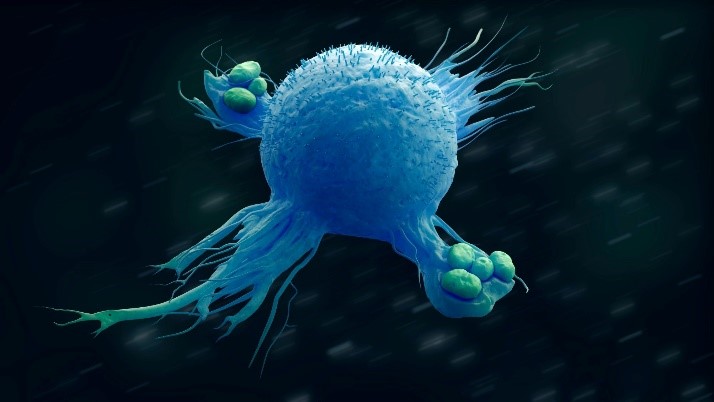2024-10-29
Toward the Identification of a Novel Therapeutic Target for Obesity and Steatohepatitis
Endocrinology and Metabolism
Obesity
and metabolic diseases, notably type 2 diabetes and liver steatosis-associated conditions,
represent significant public health concerns. Growth differentiation factor 15 (GDF-15)
is a circulating factor primarily involved in the activation of neurons within
the brain that regulate food intake. GDF-15 levels in the bloodstream are
dysregulated across various disease states, including obesity; however, the
molecular pathways governing GDF-15 modulation in obesity and steatohepatitis
remain to be elucidated.
This study investigated the role of GDF-15 in the development of obesity and disease progression toward hepatic pathology. The primary objective was to elucidate the mechanisms underlying GDF-15 production and regulation in these two pathologies.
GDF-15: A Dual Role in the Development of Obesity and Steatohepatitis?
The study employed an integrated approach combining murine models with the analysis of human biopsy samples. Human cohorts were meticulously stratified for obesity, type 2 diabetes, and distinct phases of hepatic steatosis. The murine models mirrored the progression of metabolic dysfunction over a period of 12 to 24 weeks of diet-induced obesity.
To enhance the reliability of findings, data analysis incorporated adjusted statistical models. This approach enabled correlations between GDF-15 levels and clinical markers of inflammation and hepatic stress, establishing links between GDF-15 expression and the progression to advanced metabolic disease stages.
Key findings of the study include:
GDF-15: A New Therapeutic Target for Obesity and Its Hepatic Complications
The present study underscores the pivotal role of GDF-15, derived from macrophages and hepatocytes, in mediating inflammatory and metabolic responses associated with obesity. Furthermore, the findings indicate that macrophage infiltration and hepatic stress significantly contribute to the progression from obesity to steatohepatitis. Collectively, this evidence suggests that GDF-15 may serve as a key biomarker and promising therapeutic target to mitigate the advancement of obesity to severe metabolic complications.
This study investigated the role of GDF-15 in the development of obesity and disease progression toward hepatic pathology. The primary objective was to elucidate the mechanisms underlying GDF-15 production and regulation in these two pathologies.
GDF-15: A Dual Role in the Development of Obesity and Steatohepatitis?
The study employed an integrated approach combining murine models with the analysis of human biopsy samples. Human cohorts were meticulously stratified for obesity, type 2 diabetes, and distinct phases of hepatic steatosis. The murine models mirrored the progression of metabolic dysfunction over a period of 12 to 24 weeks of diet-induced obesity.
To enhance the reliability of findings, data analysis incorporated adjusted statistical models. This approach enabled correlations between GDF-15 levels and clinical markers of inflammation and hepatic stress, establishing links between GDF-15 expression and the progression to advanced metabolic disease stages.
Key findings of the study include:
- In murine obesity models, macrophage infiltration and accumulation in adipose tissue, particularly in visceral adipose tissue, were directly associated with elevated GDF-15 levels.
- GDF-15 inactivation in macrophages exacerbated obesity in mice, as GDF-15 exhibits anti-inflammatory properties that mitigate obesity progression and prevent the worsening of metabolic disorders.
- GDF-15 expression was found to increase in hepatic tissue as obesity advanced to more severe stages (steatohepatitis).
- Cellular stressors, including endoplasmic reticulum stress and defective autophagy in hepatocytes, were shown to stimulate GDF-15 production.
GDF-15: A New Therapeutic Target for Obesity and Its Hepatic Complications
The present study underscores the pivotal role of GDF-15, derived from macrophages and hepatocytes, in mediating inflammatory and metabolic responses associated with obesity. Furthermore, the findings indicate that macrophage infiltration and hepatic stress significantly contribute to the progression from obesity to steatohepatitis. Collectively, this evidence suggests that GDF-15 may serve as a key biomarker and promising therapeutic target to mitigate the advancement of obesity to severe metabolic complications.

Last press reviews
Dark chocolate: guilty pleasure or a renal ally?

By Ana Espino | Published on December 16, 2025 | 3 min read<br>...
A post-exercise infrared sauna session: a booster for neuromuscular recovery or just comfort?

By Lila Rouland | Published on December 15, 2025 | 3 min read<br>
Cinnamon: more than just a spice?

By Ana Espino | Published on December 12, 2025 | 3 min read<br>...